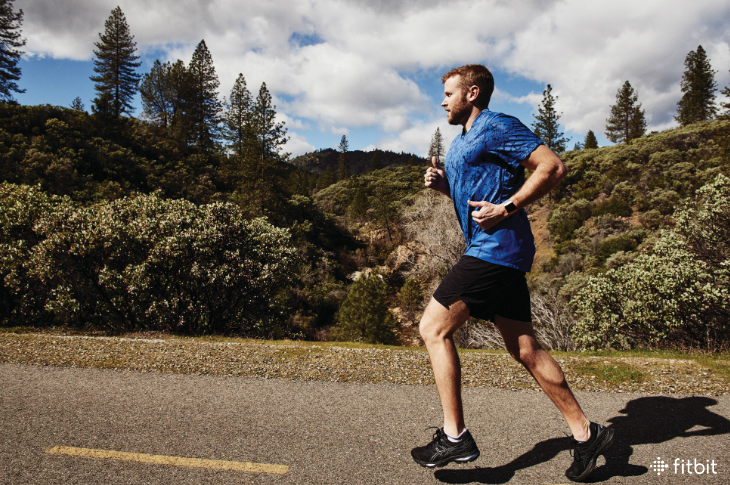 The last time the Olympic Games rolled around I remember seeing a headline about marathon runners not being able to carry their bags at the airport because they didn’t have the upper body strength. It’s laughable—thinking about a tiny, 120-pound marathoner trying to lift his 50-pound bag off the conveyor belt. We’re talking about athletes who are elite in their sport, but lack functional strength. There is certainly some truth to the fact that most world-class distance runners don’t have the strongest upper bodies, but that shouldn’t keep everyday runners and endurance athletes from focusing on building a lean-yet-strong upper body.
The last time the Olympic Games rolled around I remember seeing a headline about marathon runners not being able to carry their bags at the airport because they didn’t have the upper body strength. It’s laughable—thinking about a tiny, 120-pound marathoner trying to lift his 50-pound bag off the conveyor belt. We’re talking about athletes who are elite in their sport, but lack functional strength. There is certainly some truth to the fact that most world-class distance runners don’t have the strongest upper bodies, but that shouldn’t keep everyday runners and endurance athletes from focusing on building a lean-yet-strong upper body.
Still, I know how most distance runners think. They wonder: Will strength training make me put on too much muscle mass? After all, being lean and slender is ideal for running. During my professional career, this is exactly why I avoided strengthening my upper body. I was afraid that my natural, more muscular physique would shine through. Since my retirement, my primary goal has been to add strength and muscle to my frame, and I’ve discovered firsthand how hard that actually is to do.
Not only do I have to eat a ton of food (5,000 calories per day for me), but I also have to lift really heavy and run a lot less. So to strength train without getting swole, try to avoid a caloric surplus, run as often as you’d like, and focus on body weight movements or low-weight resistance exercises.
Your strength sessions don’t need to be long, but they should include runner-specific movements. Which exercises should runners perform to build a strong, lean upper body? In my opinion, core training and arm work rank supreme.
Core-Training Moves for Runners
Core strength is so much more than just getting that summer six pack. Having a strong core allows the body to stay in the proper position while running: tall, chest up and open, hips tucked in (not running with your butt sticking out), and shoulders pulled back with the arms swinging freely by the hips. Holding this positioning requires a surprisingly strong core and a very specific type of upper body strength. Here are the three core-strengthening moves I recommend incorporating into your workout routine three times a week:
Planks: Planks are a good way to practice engaging your core and focus on keeping your hips tucked, much in the same fashion as running. To properly engage your core, make sure your body is aligned with your neck and spine remaining neutral (gaze down at the floor) and your shoulders pressed down and back.
Squats: This compound movement activates core muscles without isolating them, again mimicking running. Start with your feet shoulder-width apart. Drive your hips back and descend until you break parallel. As you come up, press through your heels and squeeze your glutes at the top.
Medicine Ball Throws: While there are many variations you can do, essentially any movement that causes you to “pop your hips” can help you build core strength. My personal favorite is the medicine ball throw. Simply squat down and throw the medicine ball up as high in the air as possible by quickly and powerfully popping your hips, then receive the ball again in the “squat and catch” position.
Arm Strength Training for Runners
Your running rhythm is dictated by your arm swing, which makes arm strength extremely important if your goal is to run as fast as possible. Here’s my favorite move for building them up.
“Dumbbell Runner Arms”: Unlike biceps curls which can add mass, picking up a set of light dumbbells and doing this move shouldn’t make you beefy. Instead, the move can help correct sloppy form by strengthening the exact muscles you need to execute a strong arm swing when running. While holding five-pound dumbbells, stand in front of a mirror and move your arms the way you would while running. Carefully watch your form and focus on keeping your shoulders back and down (not rolled in), and allow your hands to graze your hips with every stroke as you swing your arms forward and back (not across the body). Also, be sure to brace your core to protect your lower back. I recommend doing this move as hard as you can for five minutes. It’s amazing how heavy five pounds can feel at the end of five minutes!
This information is for educational purposes only and is not intended as a substitute for medical diagnosis or treatment. You should not use this information to diagnose or treat a health problem or condition. Always check with your doctor before changing your diet, altering your sleep habits, taking supplements, or starting a new fitness routine.

If you have questions about a Fitbit tracker, product availability, or the status of your order, contact our Support Team or search the Fitbit Community for answers.
Please note: Comments are moderated and may not appear immediately after submission.